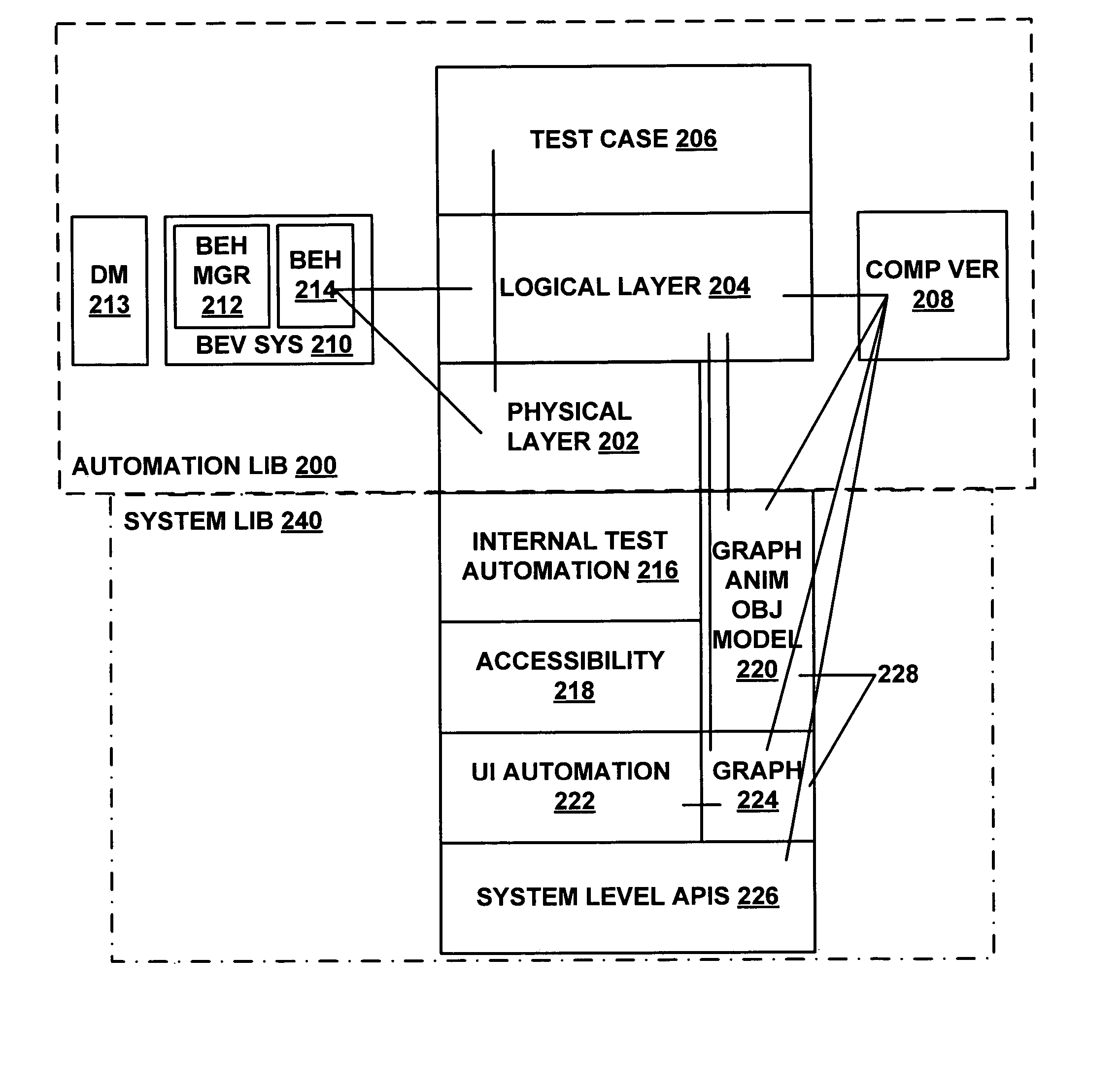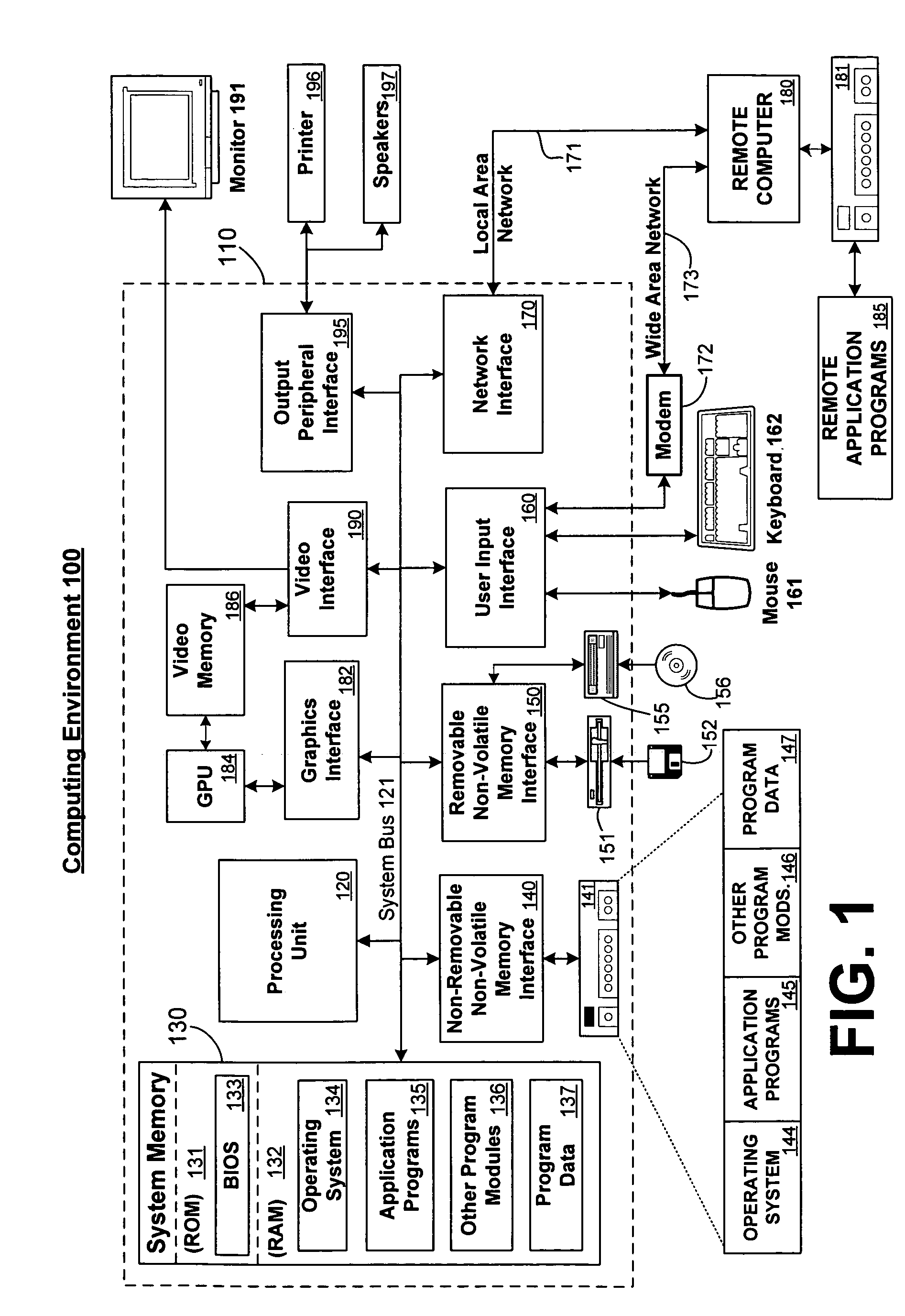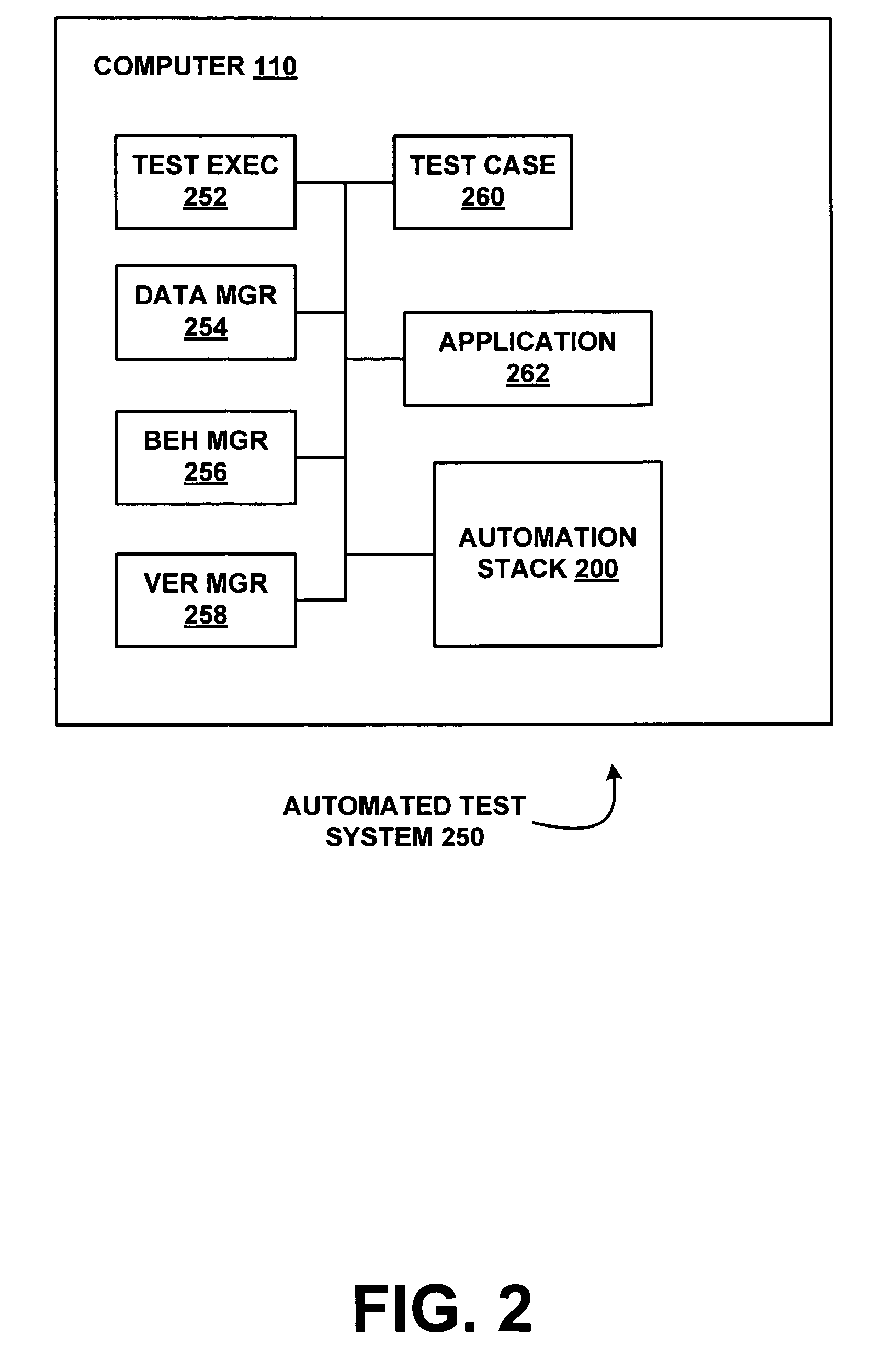Test automation stack layering
a technology of automation stack and software testing, applied in the direction of error detection/correction, instruments, computing, etc., can solve the problems of software not being tested at all, expected results not being determined, and automated software testing usually not beginning
- Summary
- Abstract
- Description
- Claims
- Application Information
AI Technical Summary
Benefits of technology
Problems solved by technology
Method used
Image
Examples
Embodiment Construction
Overview
[0027]One challenge in the development of test cases is to prepare a set of test cases that provides a comprehensive test. A large percentage of test cases exercises a small percentage of the user actions under test. To understand why this may happen, consider that an individual operation can usually be executed via several different user actions. For example, creating a new document in Microsoft Word can be done by:
[0028]Clicking the File menu, clicking the New submenu, then clicking the New Document menu item.
[0029]Typing Alt+F to invoke the File menu, typing N to invoke the New submenu, then typing N to invoke the New Document menu item.
[0030]Typing Alt to invoke the main menu repeatedly pressing the left arrow key until the File menu is selected, repeatedly pressing the down arrow key until the New submenu item is selected, pressing the left arrow key a single time to expand the New submenu, repeatedly pressing the down arrow key until the New Document menu item is selec...
PUM
 Login to View More
Login to View More Abstract
Description
Claims
Application Information
 Login to View More
Login to View More - R&D
- Intellectual Property
- Life Sciences
- Materials
- Tech Scout
- Unparalleled Data Quality
- Higher Quality Content
- 60% Fewer Hallucinations
Browse by: Latest US Patents, China's latest patents, Technical Efficacy Thesaurus, Application Domain, Technology Topic, Popular Technical Reports.
© 2025 PatSnap. All rights reserved.Legal|Privacy policy|Modern Slavery Act Transparency Statement|Sitemap|About US| Contact US: help@patsnap.com



